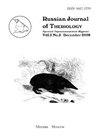太平洋海象Odobenus rosmarus diversions Illiger的残留牙齿,1815(食肉目:Odobenidae)
IF 0.6
4区 生物学
Q4 ZOOLOGY
引用次数: 0
摘要
对来自楚科奇半岛(俄罗斯)的太平洋海象的94个标本进行了残留牙齿检查。研究了以下牙齿:第二颗上切牙和第三颗下切牙、第四颗上前臼齿以及第一颗上臼齿和第一颗下臼齿。上第二切牙是残留牙齿中最大的,与其他牙齿相比不太可能被重新吸收。大多数残留牙齿的生长时间较短(1-2年)。对于大多数残留的牙齿,与海象的水泥层总数和/或年龄无关,只有牙釉质和部分牙本质上部被磨损,而没有使任何牙骨质层变形。通常,上第二切牙和上第四前臼齿的重量和宽度会随着每年增加的水泥层的数量而增加。对于大多数检查的残留牙齿,同一个体的成对牙齿上的水泥层数量一致,但很少与其他非残留牙齿上的牙骨质层数量一致。由于牙骨质层的不规则沉积,残留的牙齿不应用于年龄测定。如何引用这篇文章:Kryukova N.V.2018。太平洋海象Odobenus rosmarus diversions Illiger,1815(食肉目:Odobenidae)//俄罗斯J.Theriol。第17卷第2期。P.78–84.doi:10.15298/rusjtheriol.17.203本文章由计算机程序翻译,如有差异,请以英文原文为准。
Vestigial teeth of the Pacific walrus Odobenus rosmarus divergens Illiger, 1815 (Carnivora: Odobenidae)
Vestigial teeth of the Pacific walrus from the Chukotka Peninsula (Russia) were examined for 94 specimens. The following teeth were studied: the second upper and the third lower incisors, the fourth upper premolar, and the first upper and first lower molars. The upper second incisor is the largest among vestigial teeth and is less likely to be reabsorbed than the others. Growth duration for the majority of vestigial teeth is short (1–2 years). For most of the vestigial teeth, independent of the total number of cement layers and/or age of the walrus, only the enamel and partial upper part of dentine were worn off — without deforming any cementum layers. Generally the weight and width of the upper second incisor and the upper fourth premolar will increase relative to the number of annual cement layers added. For the majority of vestigial teeth examined, the number of cement layers coincided on pairs of teeth the same individual but seldom coincided with the number of cementum layers on other non-vestigial teeth. Because of irregular deposition of cementum layers, vestigial teeth should not be used for age determination of purposes. How to cite this article: Kryukova N.V. 2018. Vestigial teeth of the Pacific walrus Odobenus rosmarus divergens Illiger, 1815 (Carnivora: Odobenidae) // Russian J. Theriol. Vol.17. No.2. P.78–84. doi: 10.15298/rusjtheriol.17.2.03
求助全文
通过发布文献求助,成功后即可免费获取论文全文。
去求助
来源期刊

Russian Journal of Theriology
Agricultural and Biological Sciences-Animal Science and Zoology
CiteScore
0.90
自引率
33.30%
发文量
0
期刊介绍:
The Russian Journal of Theriology publishes papers on all aspects of mammalian biology: taxonomy, zoogeography, ecology, behavior, morphology, development, physiology, paleontology, and evolution. Studies of extinct as well as extant taxa are included. Reviews are also published; these may be invited by the Editorial Board.
 求助内容:
求助内容: 应助结果提醒方式:
应助结果提醒方式:


